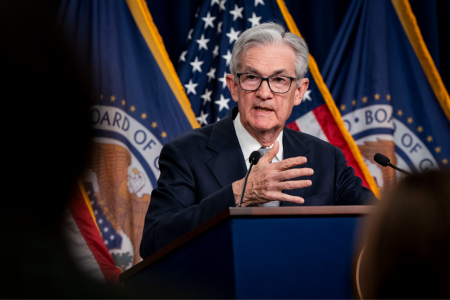Earnings Season Approaches – Key Trends to Watch
09 Jan 2025Earnings Season Overview
Earnings season is in full swing, and all eyes are on the financial sector as some of the most influential banks prepare to announce their results. These earnings reports are more than just a measure of individual company performance; they serve as a barometer for the broader economy and financial markets. This week, titans like JPMorgan Chase, Citigroup, Wells Fargo, Goldman Sachs, and BlackRock will kick things off with their much-anticipated releases on Wednesday. Following closely on Thursday are Bank of America and Morgan Stanley, completing the first major wave of financial sector earnings. Investor interest is particularly high this season, as the S&P 500 is projected to post an 11.9% year-over-year increase in fourth-quarter earnings, marking the fastest growth since late 2021. Financial sector earnings, in particular, are expected to shine, reflecting a remarkable 40% increase over last year’s figures. This surge comes on the heels of a stellar 2024, where financial stocks outperformed significantly with a 28% gain, far exceeding the S&P 500’s 23% rise. While some of the growth can be attributed to last year’s relatively low earnings baseline, the financial sector’s current performance is also being driven by a range of supportive factors, including the benefits of a high-interest-rate environment and improved valuations. For many investors, these earnings reports will set the tone not just for the quarter but for the year ahead, offering critical insights into the health of the economy and market sentiment.
Why Banks Matter
Banks occupy a central role in the economic landscape, making their performance a key indicator of broader financial stability and growth potential. In today’s economic climate, the banking sector is benefiting significantly from high-interest rates, which have expanded net interest margins—the difference between the rates banks charge on loans and the costs they pay for deposits and borrowing. This has created a highly profitable environment for banks, allowing them to generate strong revenue from their core lending operations. Beyond these fundamentals, banks are also poised to gain from a resurgence in dealmaking, mergers and acquisitions, and initial public offerings (IPOs), all of which had slowed in recent years but show signs of rebounding. These trends provide investment banks with critical fee-generating opportunities, further boosting the sector’s earnings potential.
Moreover, favorable regulatory conditions and historically attractive stock valuations are drawing increased investor interest, positioning financial stocks as a potential standout performer in 2025.
Moreover, favorable regulatory conditions and historically attractive stock valuations are drawing increased investor interest, positioning financial stocks as a potential standout performer in 2025.
However, this optimistic outlook is not without its risks. The financial sector’s success hinges on the continued stability of the broader economy, which remains vulnerable to a range of pressures. Geopolitical tensions, evolving regulations, and the possibility of an economic slowdown could all create headwinds for the sector. Additionally, investor confidence plays a crucial role in sustaining growth; any shift in sentiment could dampen the sector’s momentum. This is why this earnings season is particularly critical: investors will be closely analyzing bank reports for insights into key metrics such as loan growth, deposit trends, and credit quality. These indicators will offer a clearer picture of how banks are navigating challenges like higher borrowing costs, shifting consumer behavior, and potential credit risks. Earnings calls are expected to delve deeply into strategic priorities for 2025, shedding light on how banks plan to mitigate risks and capitalize on opportunities in a rapidly changing macroeconomic environment. From plans to address potential credit concerns to strategies for expanding into new markets or leveraging digital innovations, banks are under intense scrutiny to demonstrate their readiness for the road ahead.
What to Watch This Week
his week promises to be a defining moment for both the markets and the economy, with a packed schedule of data releases and earnings reports providing valuable context for what lies ahead. The week begins quietly on Monday, allowing investors to prepare for the flurry of activity that follows. On Tuesday, the US Producer Price Index (PPI) for December will be released, providing important insights into inflationary pressures at the production level. This data will be scrutinized for its implications on Federal Reserve policy and the broader inflation outlook. Wednesday is a pivotal day, featuring a series of critical inflation reports from the US, UK, and France, as well as eurozone industrial production figures, which together will offer a comprehensive view of global economic trends. Adding to the day’s significance, major banks like Citigroup, BlackRock, Goldman Sachs, JPMorgan, and Wells Fargo will release their earnings, providing key insights into how financial institutions are navigating this complex environment.
The pace accelerates further on Thursday, with a focus on Europe as inflation data from Italy and Germany is unveiled, alongside UK economic growth figures. These reports will be accompanied by the release of US retail sales data, a vital indicator of consumer spending during the holiday season. Earnings highlights include Bank of America, Morgan Stanley, TSMC, and UnitedHealth, making Thursday another critical day for market watchers. The week culminates on Friday with a truly global perspective. China’s fourth-quarter economic growth and retail sales figures will provide a window into the strength of the world’s second-largest economy, while UK retail sales will offer a more localized view of consumer activity. In the US, key indicators such as industrial production, housing starts, and building permits will round out the week, offering further clarity on domestic economic conditions. With so much at stake, this week’s developments are expected to have far-reaching implications, shaping market sentiment and investment strategies well into 2025. Investors will be watching closely for signals about the direction of monetary policy, corporate performance, and consumer behavior, making this an essential week for staying informed and prepared.

.png)


